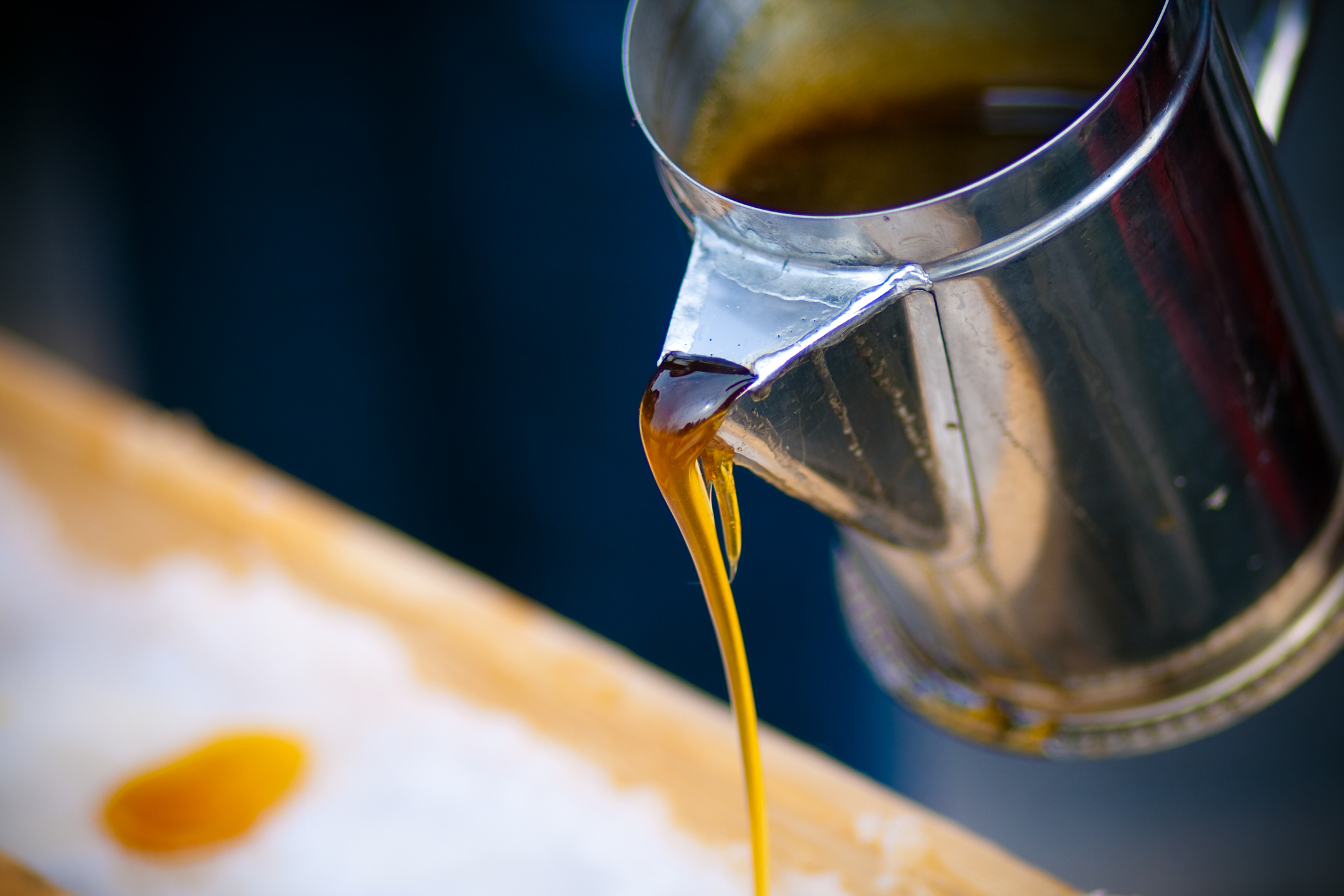Late winter is the time of year to make maple syrup. With all the hard work that goes into the different steps of syrup production, it is important to properly preserve this tasty treat.
Maple trees can be tapped as early as January in some areas of the country. Usually, in Michigan, maple sugaring starts in early March, and then it is time to store maple syrup. It is hard work to make maple syrup, and when it’s done, it is time to focus on safe storage.
There are several steps that need to be taken when storing maple syrup, it all starts with straining and filtering. Then depending on what grade of syrup has been produced, there can be additional value added to the product. Syrup is graded by color, the lighter the color of the syrup the higher the grade. This is just a brief overview of what affects the grade of maple syrup. There are other factors that may affect the grade, such as flavor, uniformity, odor and even clarity. Many maple sugar makers begin sap collection as soon as the sap starts flowing, which can be as early as January, depending on the weather. For sap to run, the outdoor temperature must freeze (32 degrees Fahrenheit or lower) at night and then thaw (35 degrees or above) in the daytime.
Sap is gathered from the maple tree each day and brought to a location or a “sugar shack” to boil. The boiling process evaporates the water and concentrates the sugar to make syrup. Depending on the amount of sugar in the maple tree it can take 40 gallons of sap to create one gallon of syrup. This takes a lot of time and diligence to acquire a finished product.
After the hard work of turning sap into syrup is done, it’s important to decide on the type of container to use for storing maple syrup. Typically, maple syrup is stored in glass jars so the beautiful color can shine through. Glass containers can be canning jars that are found in a local store or fancy-shaped glass jars that can be purchased from maple syrup suppliers. Many people like to see the true color of pure maple syrup through the glass jar. There are also producers that use a plastic jug that comes in many sizes for safe storage.
Food-grade plastic containers can be purchased from maple syrup supply companies. The lids are purchased separately, so make sure that when the order is placed there are lids purchased as well. When preserving maple syrup in plastic follow the same method as when preserving in glass.
Metal containers are also a viable option for storing maple syrup. This type of storage container represents a traditional way to store maple syrup. Metal containers also come in various sizes. They can be very small to as large as stainless steel barrels. Now that we know what type of container options there are, we can begin the process of storage through hot packing maple syrup.
Once the sap has been processed to become maple syrup, it is ready to filter. It is best to filter syrup while it is hot (185 to 190 degrees Fahrenheit) which helps the filtering process go fairly quickly. It is important to remove any sediment. The filtering process can be done in many ways, but we are going to focus on a basic cloth filtering system. To filter, use white cotton or wool filters that can be acquired from a reputable maple syrup supplier. Filtering also helps remove contaminants that could add to the growth of yeast and mold. Packing the syrup in hot sanitized containers of food-grade quality inhibits the growth of bacteria.
According to the Ohio State University, small containers should be sanitized by boiling them in water for 10 minutes before using them. Additionally, filling any type of container may cause contamination so it is recommended by The Ohio State University to invert the container immediately after being filled with hot syrup. The only time it is recommended to invert a container during processing is when preserving syrup. Any other process could change the color and flavor of the syrup.
Michigan State University Extension always promotes using tested recipes when preserving food. During all processes of making and storing syrup, it is important to monitor the temperature of the syrup. If it is below 180 degrees Fahrenheit after filtering it must be reheated to 180 degrees Fahrenheit or above to pack the syrup hot. Be careful to not go over 200 degrees Fahrenheit because that may darken the syrup, which would lower the grade of syrup. Store your syrup in a cool, dark place for up to two years until it is opened, then it must be stored in a refrigerator for up to about one year.
Enjoy the time spent making syrup and be careful preserving your syrup so it can be enjoyed all year long. For more tips and tricks on preserving food, visit MSU Extension’s Food Preservation website.
This article was published by Michigan State University Extension. For more information, visit https://extension.msu.edu.














